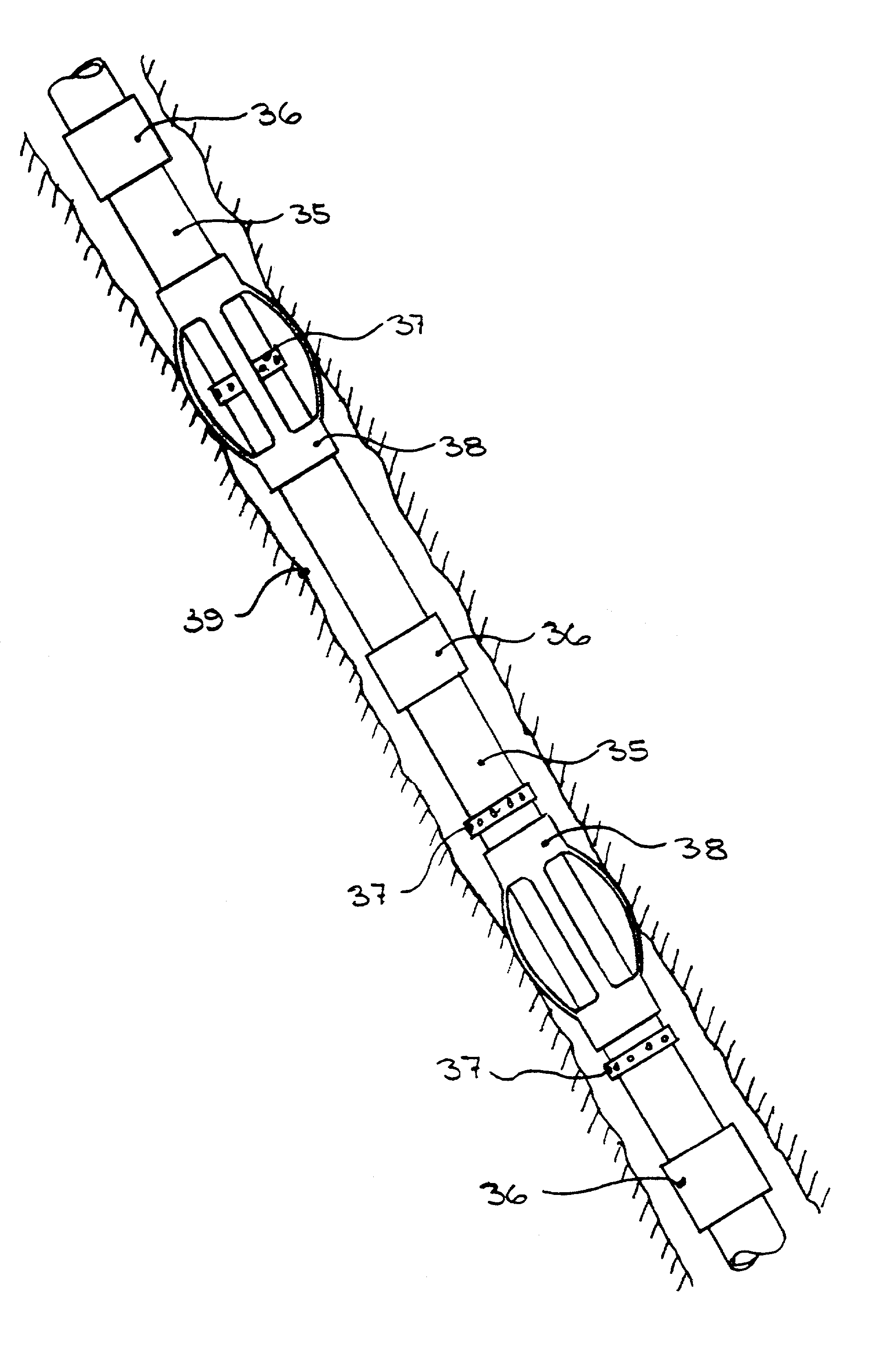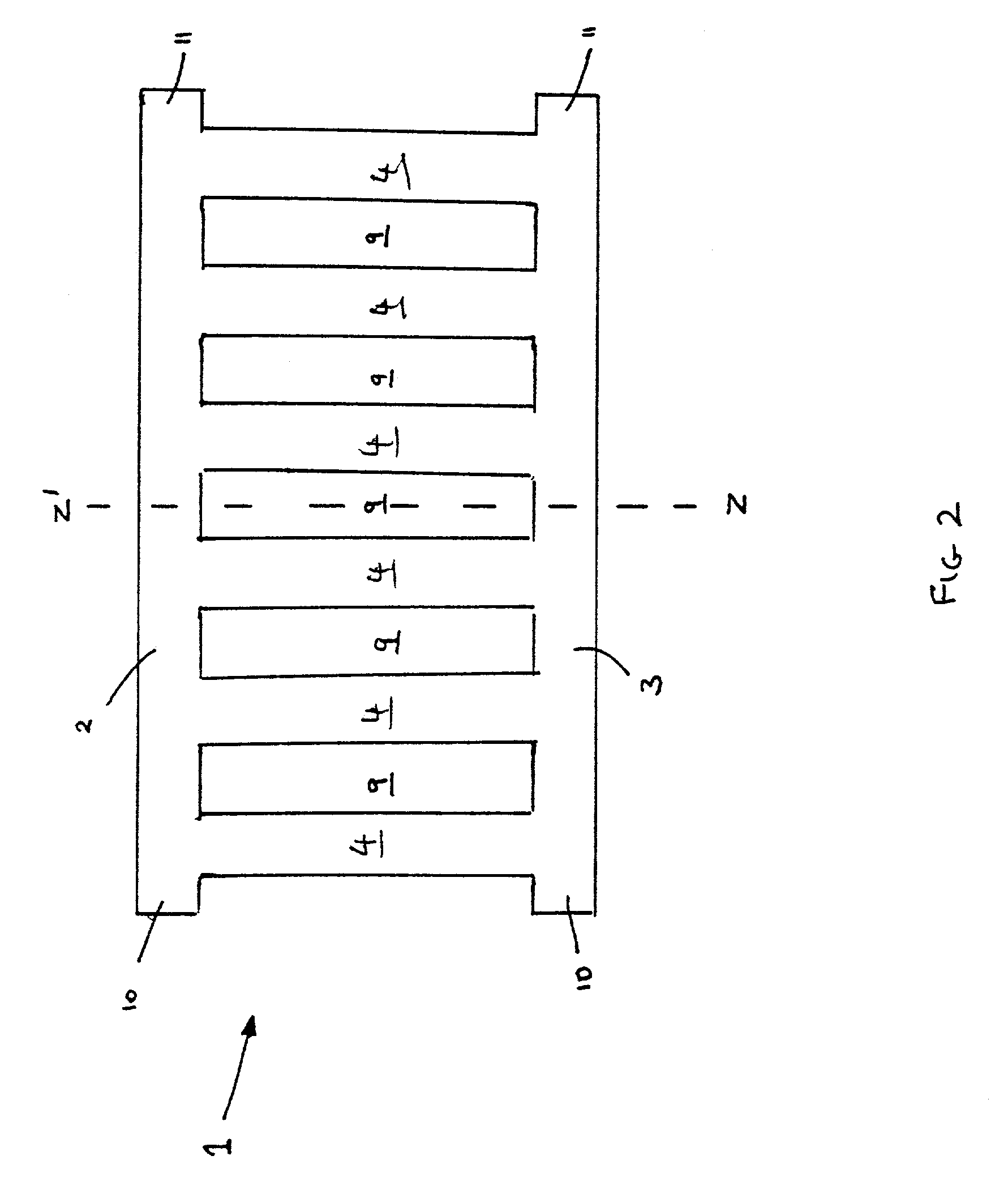Method of making a centering device and centering device formed by that method
a technology of centering device and centering device, which is applied in the direction of drilling rods, drilling pipes, other domestic objects, etc., can solve the problems of spring centralisers currently in use, solid centralisers that cannot adequately support tubulars in a central position, and solid centralisers that risk jamming in the borehol
- Summary
- Abstract
- Description
- Claims
- Application Information
AI Technical Summary
Benefits of technology
Problems solved by technology
Method used
Image
Examples
first embodiment
[0092]FIG. 2 shows a blank 1, which has been formed from a single sheet of boron steel. The blank has a longitudinal axis Z–Z′ two transverse web portions 2, 3 spaced apart by a number, here six, of spaced longitudinal web portions 4 which extend substantially parallel (in this embodiment) to the axis Z–Z′. The first and second transverse web portions 2, 3 are generally rectangular in shape, are mutually parallel and are disposed substantially perpendicular to the axis Z–Z′. The six longitudinal web portions 4 extend between the transverse web portions 2,3 to define therebetween five apertures 9 of equal size. The outer longitudinal web portions 4 are inset from the ends of the transverse web portions by around half the width of the apertures 9 to leave free end portions 10,11 of the transverse web portions. The free end portions are, in a centraliser over-lappingly secured together so that each first end portion 10 overlaps its corresponding second end portion 11 whereby the centra...
second embodiment
[0115]FIG. 8 shows a centraliser in accordance with the present invention. The centraliser 21 is generally similar to that described with respect of FIG. 3 although it has six bow elements 22, uniformly distributed about its circumference (see FIG. 9). Additionally, however, they are formed at the lower end showed in the Figure of the centraliser, small “tangs”23 extending angularly outwards from the lower collar portion 3. The tangs protrude into the annulus formed between the tubular being centralized and the borehole and have the effect of producing turbulence in fluid passing through the annulus. The tangs are integrally formed with the centraliser. It will be understood by those skilled in the art that tangs may be provided at both ends of the centraliser if desired.
[0116]Referring to FIG. 10, an embodiment of the centraliser blank is shown in which the longitudinal web portions are shaped to have a reduced width where they extend into the end collars 2 and 3. A centraliser of ...
fourth embodiment
[0122]Referring to FIGS. 17 and 18, in the centraliser 40, the form of the bow elements 41 (best seen with reference to FIG. 18) is generally flat.
[0123]Continuing to refer to FIGS. 17 and 18, each bow element 41 has a first substantially straight portion 42 extending downwardly from the first collar portion 2 and laterally away from the longitudinal axis, followed by a second portion 44 which is substantially axis parallel and a third straight line 43 which tapers back to extend into the lower collar at portion 3.
[0124]The fourth embodiment has very rigid properties. Very high loads would be required to deflect the bows and, once the material yield point had been exceeded, there would be virtually no spring recovery. Such rigid centralisers would be made undersize to the borehole, typically six millimeters or more less than the borehole diameter. They might be employed where there was the expectation of high lateral loads of greater magnitude than the restoring force of the central...
PUM
| Property | Measurement | Unit |
|---|---|---|
| length | aaaaa | aaaaa |
| temperature | aaaaa | aaaaa |
| diameter | aaaaa | aaaaa |
Abstract
Description
Claims
Application Information
 Login to View More
Login to View More - R&D
- Intellectual Property
- Life Sciences
- Materials
- Tech Scout
- Unparalleled Data Quality
- Higher Quality Content
- 60% Fewer Hallucinations
Browse by: Latest US Patents, China's latest patents, Technical Efficacy Thesaurus, Application Domain, Technology Topic, Popular Technical Reports.
© 2025 PatSnap. All rights reserved.Legal|Privacy policy|Modern Slavery Act Transparency Statement|Sitemap|About US| Contact US: help@patsnap.com



